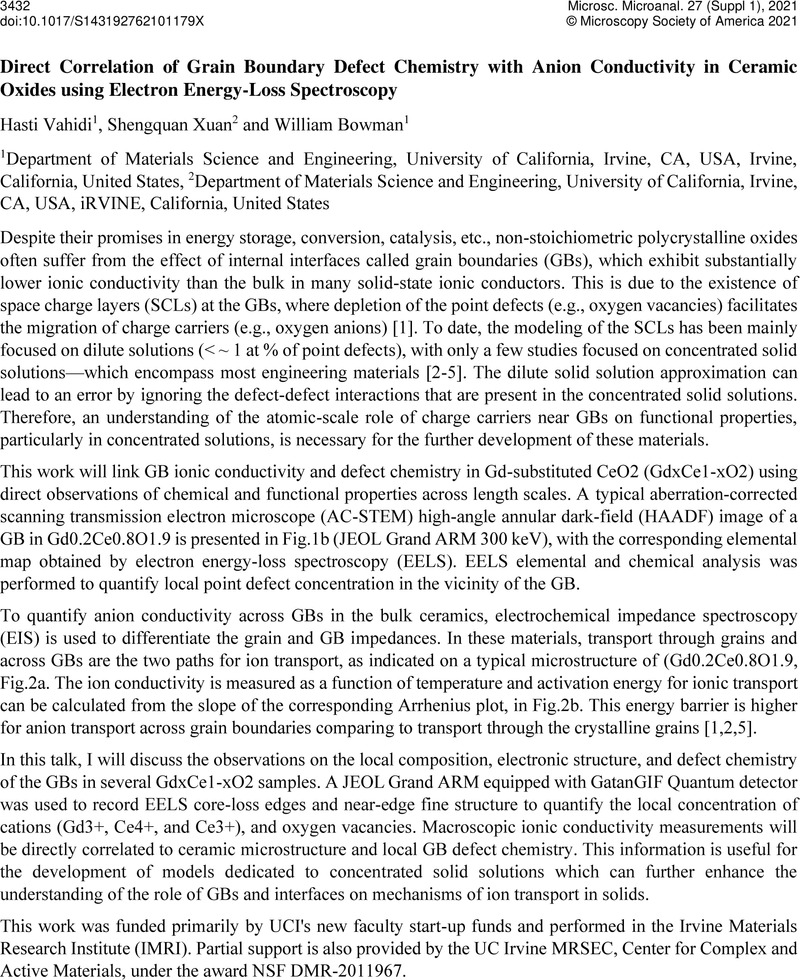No CrossRef data available.
Article contents
Direct Correlation of Grain Boundary Defect Chemistry with Anion Conductivity in Ceramic Oxides using Electron Energy-Loss Spectroscopy
Published online by Cambridge University Press: 30 July 2021
Abstract
An abstract is not available for this content so a preview has been provided. As you have access to this content, a full PDF is available via the ‘Save PDF’ action button.

- Type
- Microscopy & Spectroscopy of Energy Conversion and Storage Materials
- Information
- Copyright
- Copyright © The Author(s), 2021. Published by Cambridge University Press on behalf of the Microscopy Society of America
References
Tschöpe, A., Kilassonia, S., & Birringer, R. (2004). The grain boundary effect in heavily doped cerium oxide. Solid State Ionics, 173(1-4 SPEC. ISS.), 57–61.Google Scholar
Avila-Paredes, H. J., Choi, K., Chen, C. T., & Kim, S. (2009). Dopant-concentration dependence of grain-boundary conductivity in ceria: A space-charge analysis. Journal of Materials Chemistry, 19(27), 4837–4842.CrossRefGoogle Scholar
Bishop, S. R., Stefanik, T. S., & Tuller, H. L. (2012). Defects and transport in PrxCe1-xO2-δ: Composition trends. Journal of Materials Research, 27(15), 2009–2016.Google Scholar
Yahiro, H., Eguchi, K., & Arai, H. (1989). Electrical properties and reducibilities of ceria-rare earth oxide systems and their application to solid oxide fuel cell. Solid State Ionics, 36(1–2), 71–75.CrossRefGoogle Scholar
Mebane, D. S., & De Souza, R. A. (2015). A generalized space-charge theory for extended defects in oxygen-ion conducting electrolytes: from dilute to concentrated solid solutions. Energy and Environmental Science, 8(10), 2935–2940.CrossRefGoogle Scholar


